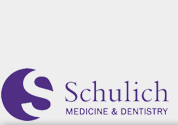Case Synopsis
In 2014, Lisa Montebello, a Registered Dental Hygienist and Master of Public Health candidate at the Interfaculty program in Public Health, Western University, was working during her practicum with Dr. Mark Gracey, Oral Health Manager of the Middlesex-London Health Unit (MLHU), in London, Ontario, Canada. Her objective was to formulate a clinical calibration assessment and recommendation report. Clinical calibration is a comparison of agreement between clinicians, or against a verified standard, to achieve a clinical gold standard. Dr. Gracey was responsible for following the Ontario Public Health Standards (OPHS) protocols to ensure that all Grade 2 children in the Middlesex-London area were receiving equitable access to oral health care services through oral health screenings. There were over 120 schools with five registered dental hygienists (RDHs), along with five dental assistants (DAs) providing this service through the school screening program. After a calibration review slide session the year before, it was found that the RDHs were rating the oral health care needs of children inconsistently. This posed a dilemma for both Dr. Gracey and Lisa, as vulnerable children with urgent dental care needs may be missed as a result. There was also no standardized recommended statistical analysis in place at MLHU to analyze the data from the calibration sessions. Lisa needed to come up with a best practice guideline for clinical calibration, including statistical analysis recommendations, so that the MLHU could ensure that no child was overlooked due to inconsistent measurement outputs. Lisa had just 8 weeks to observe and assess the entire current calibration system in place, and to formulate a report for the oral health team at the MLHU.
Case Objectives
- Effectively engage with stakeholders within oral health programs to determine differences in approaches to screening systems and any outside influences.
- Assess current calibration methods and procedures used in school-based oral health screening programs, including the screeners, the procedure, and environment.
- Develop a best practice guideline in a public health setting, such as a school-based oral health screening program.
- Determine and analyze stakeholder values.
- Adapt to challenges and motivate others.
- Evaluate recommendation outcomes.
Case Study Questions
- What are the dilemmas currently being faced by Lisa and Dr. Gracey of the MLHU? What are the repercussions of these dilemmas?
- What steps could Dr. Gracey and Lisa take in approaching staff and determining why the analysis shows an inconsistency in the oral screening process?
- Who are the key stakeholders in this case? What are the possible differing levels of interest or values of the stakeholders?
- What process is required to determine best practices in clinician calibration for oral health providers?
- What steps should be taken to implement the best practice recommendations?
- How can you ensure that all stakeholder views are incorporated in deciding which changes to make in the calibration session?
- What incentives could be given to employees to ensure “buy-in”?
- What possible challenges might Dr. Gracey or Lisa face with implementing this project?
- How would you evaluate the outcomes of the best practice guideline recommendations made by Lisa?
Keywords
oral health, screening, best-practice, guidelines
ISBN
978-0-7714-3103-6
Recommended Citation
Lopresti, S., Okoronkwo, C., Terry, A. (2015). Let’s Agree to Agree: Management Techniques in Calibrating Oral Health Screening Systems in: Speechley, M., & Terry, A.L. [eds] Western Public Health Casebook 2015. London, ON: Public Health Casebook Publishing.


